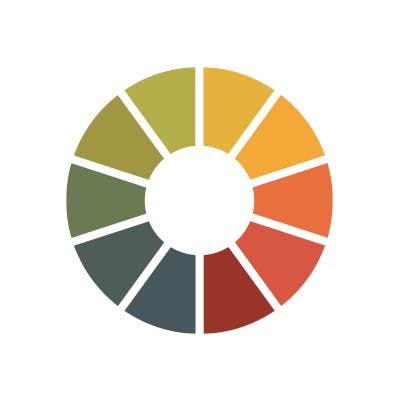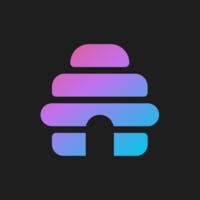Megan Boshuyzen, senior email dev at Sinch, on Parcel vs. Litmus vs. Dreamweaver
 Jan-Erik Asplund
Jan-Erik Asplund

Background
Megan Boshuyzen is a senior email developer at Sinch. We talked to Megan about the differences between email writing and development tools, the persistence of Adobe Dreamweaver in many email development workflows, and the different contours of the developer experience in email tools.
Questions
- Let’s start with just how you came to know Parcel as a tool and why you started using it.
- Can you explain what you do now, and what Sinch does?
- How do you use Parcel, how often are you in the tool, and who on the team interfaces with the work product that comes out of Parcel? Where does that work product go when you’re done?
- Would that mostly be swapping out the text in between tags, or is it more manipulation of the documents that you've built?
- Roughly how many ‘emails’ do you have in Parcel at a time across the three different brands?
- Can you describe what the email design system looks like? Because I think for a lot of people, it's kind of like a novel concept. What does that look like in Parcel in general?
- Any reaction to now having this Parcel code editor inside Customer.io?
- Can you talk about how the experience is different, and why the standalone makes more sense to use?
- I do want to talk about Litmus and better understand, for one, how the Parcel code editor compares to Litmus's.
- Dreamweaver is the other one that's come up quite a bit. For some folks, it's like they already have to have a Adobe Creative Suite membership, so it’s like the free alternative. But yeah, curious how you would compare Dreamweaver and Parcel, and if you have access to Dreamweaver, is that another alternative option for you?
- In a world where Parcel didn't exist, what do you think you would use?
- Curious for your take on Customer.io as an ESP compared to prior ones or other ones that you've used as an email developer.
- What kind of stuff is on your personal wishlist when it comes to features for Parcel? What comes to mind there?
Interview
Let’s start with just how you came to know Parcel as a tool and why you started using it.
I started using Parcel back in 2021 when I was interviewing for the position I have now. I needed to design and develop a sample newsletter, and I knew about Parcel because I know Avi, so I decided to hop into the trial because I wanted a place where I could easily code emails. I knew it was in beta, and that people were starting to use it more, and wanted to use something that was not Dreamweaver, basically. For my other position, I was using Litmus and using the Litmus Builder for all of those emails, because it was syncing into our ESP, but obviously, that was the work account, so I couldn’t use that to do a test for another job. I just jumped into the test account, or free trial account, to work on that project, and when I started this position, they asked me what I needed, and I told them I needed Parcel for email development.
Can you explain what you do now, and what Sinch does?
I am the Senior Email Developer at Sinch Email. Sinch Email comprises three different brands, Mailgun, Mailjet, and Email on Acid. Mailgun is an SMTP/API service, so software engineers will use it to send out triggered emails, like your transactional emails, order confirmations, all that jazz. Mailjet is an email service provider, so marketing professionals will use it to send out marketing emails. Email on Acid is a QA service, where you can check the emails that you’ve developed in over 100 different email clients, you can check to see how accessible you are. There are some analytics that are part of it, and all that jazz.
How do you use Parcel, how often are you in the tool, and who on the team interfaces with the work product that comes out of Parcel? Where does that work product go when you’re done?
I'm in Parcel every day. It’s essential to my job and my workflow. I developed an entire email design system specifically using Parcel and leveraging Parcel's technology, so I can rapidly create emails in all the brands that I need to create them in. Besides me, my coworker Julia is in Parcel. She will put together some simpler emails that may need to go out with a shorter turnaround time, or it's text only. She'll leverage the email design system and put those together, because I created it in such a way that somebody who isn’t an email developer but has basic HTML skills can go in and easily create basic emails. So, sometimes she'll go in there and create things too.
Would that mostly be swapping out the text in between tags, or is it more manipulation of the documents that you've built?
Mostly the former. I have templates built out in the different brands and different scenarios, and usually, she's just doing a one-column template, so she'll just grab the code for the one-column template and then just swap out headers, body text, and CTA stuff.
Roughly how many ‘emails’ do you have in Parcel at a time across the three different brands?
It varies based on what we're working on, because for example, for our Mailjet brand, we support four different languages. So when we create their newsletter, we need to do four different newsletters. Or, if we're doing an onboarding flow, which is something we did recently, we do that in all four languages. So, that number really fluctuates month-to-month depending on what we're doing.
Can you describe what the email design system looks like? Because I think for a lot of people, it's kind of like a novel concept. What does that look like in Parcel in general?
Back in January, when Parcel did Parcel Impact, I gave an entire talk about the email design system that I built specifically in Parcel. I leveraged the components feature for them. I use a lot of JSON to be able to dynamically swap out different values. If I declare the brand, say the brand's Mailjet, our primary color there is purple, and I then change the brand to EOA, all the text, the typefaces will change, my button colors will change to green, our footer will swap. If I change the language for Mailjet, then our footer's language will swap to the correct one, for the correct language. There's a lot of that sort of thing with JSON, and a lot of class switching.
Avi actually helped me a lot with creating the first iteration of it, because I didn't know what I was doing at the time, and I was one of the first people to test components for him. Back in 2021, I had to fix up over 50 emails, and a lot of it was similar. I just had to change out some text. So, I went to him and was like, ‘Avi, I have over 50 emails, I have to do it in three days.’ We had been talking about components, I was like, ‘Do you have components ready yet?’ And he was like, ‘I have an alpha version if you want to try it.’ He let me use it, and I did 53 emails in three days.
Any reaction to now having this Parcel code editor inside Customer.io?
It's been helpful. Because sometimes we'll find things in there after the fact that we need to change. Or like there is a bug in Parcel, where when you're cleaning up the CSS, sometimes there are trailing commas left behind that need to be removed. When I'm looking at the code in standalone Parcel, it's not going to tell me that's happening, because it's not exported yet. But when that exported HTML gets loaded into the Parcel editor in CIO, it catches it as an error. Then we can fix that sort of thing, which is nice. Or if we need to make a small change after the fact, it's nice to be able to leverage some of the Parcel features to quickly jump to where we need to be in the email to edit it.
Can you talk about how the experience is different, and why the standalone makes more sense to use?
Yes, so I heavily use components. My entire email is comprised of components, and I can't leverage that at all yet in CIO, and it doesn't sync at all or anything like that yet, which is why I can't do it all in CIO. That's actually becoming a problem for me now, because our logos are changing, and we’ve exported everything and manually loaded into CIO, we now have to go through over 400 emails and change all of our logos. Whereas if it all synced up, because Customer.io has snippets—which kind of act as components, that now I'm making to put into these emails—but because the components don't sync up in CIO, I can't just change the image link out and have that change happen everywhere. When I change it in standalone Parcel, it'll be fine going forward.
I do want to talk about Litmus and better understand, for one, how the Parcel code editor compares to Litmus's.
Email on Acid is the competitor to Litmus, so I haven't used that editor since leaving my old job. I don't know what changes they made to it, but that editor, the big thing for me at that time was that that editor didn’t have a code linter, so it didn’t check for errors. It would tell me if it could tell that there was an error, but it wouldn't tell me what that error was or where I could find it. I was doing a lot of copying and pasting into Dreamweaver just to find errors— Parcel didn't really exist yet. That was the biggest thing for me with it, but it wasn't terrible. You couldn't really jump around the email at all when you were looking at the live view. Like in Parcel, there's the option where you can hover over where you want to go and click on it and it'll bring you to that spot in the code, which doesn't always work, but works good enough.
Those are the chief things. It's been a couple of years now. You didn't get all the formatting, especially for the Outlook-specific code. I really love that Parcel has specific code formatting for that, because it just makes it easier to tell where that is versus a regular comment, because it usually just looks like a regular comment, so it can be hard to find. It's those little touches like that where the Parcel team really has gone above and beyond to give email developers what they need to create emails.
Dreamweaver is the other one that's come up quite a bit. For some folks, it's like they already have to have a Adobe Creative Suite membership, so it’s like the free alternative. But yeah, curious how you would compare Dreamweaver and Parcel, and if you have access to Dreamweaver, is that another alternative option for you?
I do have access to Dreamweaver and I specifically didn’t want to use it. Adobe products just overall have been getting very clunky and big and bogged down. Dreamweaver just isn't really industry standard for these things anymore. It was something that I no longer wanted to use.
In a world where Parcel didn't exist, what do you think you would use?
I'd probably still be stuck in Dreamweaver, but the next best thing would probably be VS Code. I think a lot of people code in that too. There's VS Code and there's another one that I can't think of right now that a lot of backend engineers use. I started messing around in VS Code a little bit recently for website stuff, but it seems like people who are switching between email and web development seem to do them both in something like a VS Code, from the few other people I've talked to. But because I don't do website stuff, I don't have a need to use another editor.
Curious for your take on Customer.io as an ESP compared to prior ones or other ones that you've used as an email developer.
I haven't done a whole lot in there, to be honest, because Julia handles the bulk of it, and the only other two ESPs I'm really familiar with are MailChimp and Constant Contact. I feel like that's comparing apples and oranges, because it's just two different audiences and types of marketers that use those different ESPs. I actually don't have much of an opinion. I do like being able to leverage Liquid, which is nice, in my emails, and I need to dive more into that. But other than that, I don't have many other opinions.
What kind of stuff is on your personal wishlist when it comes to features for Parcel? What comes to mind there?
A deeper integration to CIO would be fantastic. If my components could sync up, that would be awesome. I would love to see some sort of GitHub integration. One of my challenges right now with my email design system is that I can't version it at all, so I'm having trouble iterating on it because whenever I make changes, it affects every single email that I've built with that email design system, so I don't have an ability to branch off with the code and then merge it in after the fact. So, those are my two biggest things right now. I would love the deeper integration with CIO so that the emails that are in there can leverage the components, and then have the ability to version a bit more. I know Parcel has versioning in there right now, but I haven't found it as useful as maybe the team would hope. I think being able to interact with GitHub would be super helpful.
Disclaimers
This transcript is for information purposes only and does not constitute advice of any type or trade recommendation and should not form the basis of any investment decision. Sacra accepts no liability for the transcript or for any errors, omissions or inaccuracies in respect of it. The views of the experts expressed in the transcript are those of the experts and they are not endorsed by, nor do they represent the opinion of Sacra. Sacra reserves all copyright, intellectual property rights in the transcript. Any modification, copying, displaying, distributing, transmitting, publishing, licensing, creating derivative works from, or selling any transcript is strictly prohibited.










